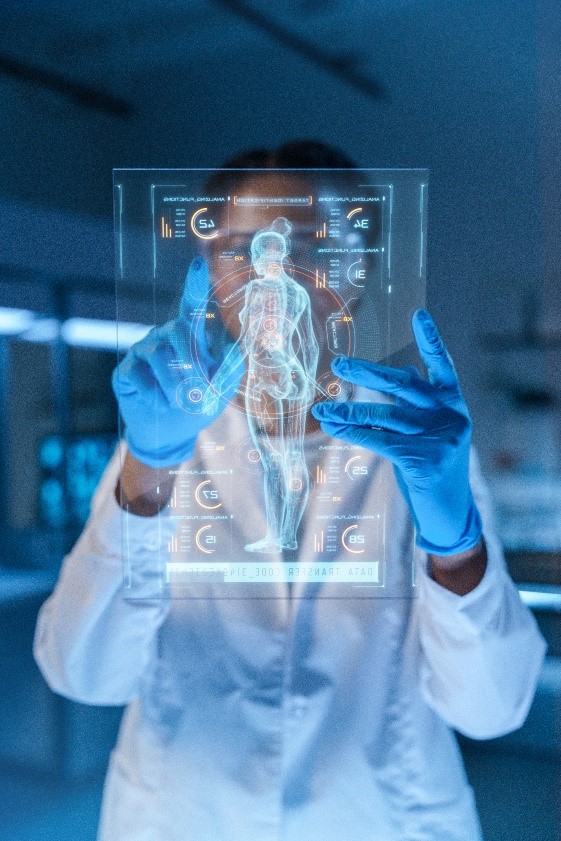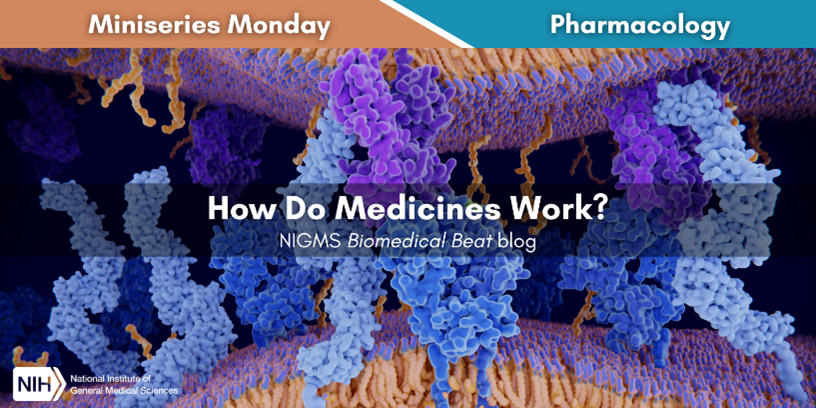
What we put into our bodies can affect how they function and what they do. For example, a sugary snack will probably make you feel differently than a high-protein meal. Similarly, different medicines elicit different responses in your body, and pharmacologists try to fine-tune each medicine to balance the desired (on-target) with the undesired (off-target) effects—a branch of pharmacology called pharmacodynamics.
Most medicines work by binding to a molecular target, usually proteins like receptors or enzymes, and either blocking or supporting its activity, which results in their therapeutic effects.
Receptors are proteins on a cell’s surface that can trigger a variety of responses inside the cell when activated. Think of receptors as a lock. Every lock has a natural key made by the body that opens it—an endogenous molecule like a hormone or neurotransmitter. Drugs or medicines that mimic the shape of the natural key and open the lock, like a hairpin someone might use to pick a lock, are called agonists. Drugs or medicines that block the lock and prevent the natural key from opening it, like a jammed lock that even its key can’t open, are antagonists. For example, allergy medicines are histamine receptor antagonists, meaning they keep histamine—the body’s natural response to an allergen—from binding and producing the allergic effect.
Enzymes are biological catalysts—almost always proteins—that help convert one molecule into another by speeding up a chemical reaction. Medicines can be activators that speed up an enzyme’s activity or inhibitors that slow it down or block it completely. Medicines that lower cholesterol, called statins, are examples of enzyme inhibitors. They block an enzyme that the body needs to make cholesterol, resulting in less of the molecule in the body.
Some types of medicines work directly on the body’s immune system. Vaccines are medicines composed of a weakened, partial, or killed disease-causing agent that stimulate the body to make antibodies—proteins the body makes naturally in response to a foreign substance. Once the body knows how to make the antibody, it can do so quickly the next time it’s exposed to the same foreign substance.
Vaccines are examples of biologics, which are medicines made from a living organism or its products. Other biologics include antibodies and human cells that scientists engineer to use as medicines.
Even though pharmacologists design a medicine to target a specific protein, tissue, or organ, sometimes it can affect others and lead to unwanted effects—often called side effects. Before medicines make it to patients, pharmacologists test them at many doses and measure the responses. They identify what doses cause what responses, whether desired or undesired, and determine a therapeutic window, or the range of doses that elicit the desired effects without the negative ones. Health care providers use this therapeutic window as a guide and try to prescribe the smallest amount of medicine that’s effective to treat their patient’s condition while minimizing unwanted effects.

Find the teaching activity that corresponds with this post in our Educator’s Corner.







